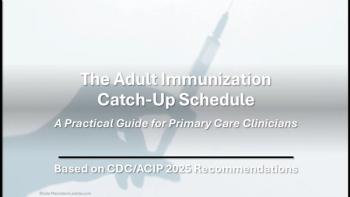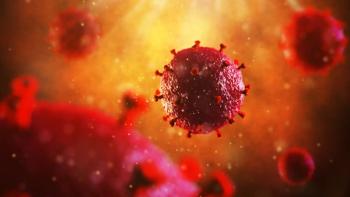
Will the latest therapies prove beneficial? Reviewing the clinical aspects of HIV- associated pulmonary hypertension
abstract: Pulmonary hypertension is an increasingly recognized complication of HIV disease. Echocardiography is the most useful imaging modality for an early diagnosis; the most frequent findings are systolic flattening of the interventricular septum, right atrial and right ventricular enlargement, and tricuspid regurgitation. Other components of the workup include comprehensive laboratory tests (complete blood cell count, measurement of prothombin time and partial thromboplastin time, hepatic profile, etc), chest radiography, pulmonary function tests with arterial blood gas analysis, ventilation-perfusion lung scanning, and spiral CT scanning. The treatment of this condition is complex and controversial, and the drug of choice has not yet been established. The therapies currently used include antiretroviral agents, bosentan, calcium channel blockers, epoprostenol, and sildenafil.
Pulmonary hypertension (PH) associated with HIV infection has been recognized with increasing frequency in recent years. Kim and Factor1 reported the first case in 1987. Since then, more than 131 cases of HIV-associated PH have been described in the literature.2 For this reason, HIV-associated PH has been included as a definite cause of precapillary PH, according to the executive summary of the World Health Organization.3
The incidence of HIV-associated PH is 1 in 200 patients, much higher than the 1 in 200,000 incidence of PH found in the general population.3 No differences in clinical, histologic, and hemodynamic features have been found between patients with HIV-associated PH and patients with primary PH.
In this article, I will discuss the most significant clinical aspects of this disease. First, I will briefly review the pathogenetic mechanisms.
PATHOGENESIS
The histopathology of HIV-associated PH is similar to that of primary PH. The most common alteration in HIV-associated PH is the plexogenic pulmonary arteriopathy. Thrombotic pulmonary arteriopathy and pulmonary venoocclusive disease are more rare histologic findings. This may suggest that similar pathogenetic mechanisms are involved in both HIV- associated PH and primary PH.
The cause of HIV-associated PH is unknown. The increased incidence of PH in HIV-infected patients was initially related to viral infection. Although a direct role of HIV-1 has not been demonstrated,4,5 several indirect mechanisms may link HIV infection to the pulmonary vascular changes. The principal pathogenetic hypotheses for the development of HIV-associated PH are shown in Table 1.6-19
A multifactorial pathogenesis of HIV-associated PH has been hypothesized. Endothelial dysfunction, deregulation of circulating cytokines, and genetic factors seem to be implicated. In particular, as in primary PH, increased plasma concentrations of endothelin-1, interleukin-6, and tumor necrosis factor a have been found in patients with HIV-associated PH (Figure).
presentation
In the largest clinical series of HIV-associated PH, 47% to 54% of the patients were male, and the age at the time of diagnosis ranged from 2 to 56 years (mean age, 33 years).2 Injection drug use was the most common risk factor for HIV infection, occurring in 50% to 58% of patients, while homosexual contacts were present in 20% of the patients, hemophilia in 9%, heterosexual contactsin 9%, and other risk factors in 6%,2,12 reflecting the epidemiology of HIV infection in the general population.
CD4+ cell counts ranged from 0 to 937/µL; the mean CD4+ count was 300/µL. There was no correlation between CD4+ cell count and the presence of opportunistic infections and the development of PH.
The most common presenting symptom was dyspnea (in 49% to 85% of patients), while pedal edema occurred in 11% to 30% of patients, nonproductive cough in 7% to 19%, syncope or near-syncope in 8% to 12%, and chest pain in 7%. Raynaud syndrome, which is more frequently found in patients with PH associated with connective tissue disease, was present in only 1 patient (1%).2,12
The principal tests used for diagnosis of HIV-associated PH include chest radiography, transthoracic echocardiography, spiral CT, pulmonary angiography, and right heart catheterization (Table 2).9
TREATMENT
The treatment of HIV-associated PH is complex and controversial. To date, no controlled clinical trial has determined the treatment of choice. The principal therapies currently used include antiretroviral agents, bosentan, calcium channel blockers, epoprostenol, and sildenafil.
The role of antiretroviral therapy is still debated. Treatment with vasodilator agents, such as the prostaglandin I2 analog beraprost or calcium channel blockers, may improve the adherence to long-term antiretroviral therapy, compared with continuous intravenous infusion of epoprostenol. The use of cyclic guanosine monophosphate (cGMP)-specific phosphodiesterase inhibitors is promising, but long-term controlled clinical trials are needed in this specific subset of patients.
Antiretroviral therapy
In a study of patients with HIV- associated primary PH, Opravil and associates20reported a reduction of right systolic ventricular pressure/ right atrial pressure gradient in 6 patients who received antiretroviral therapy, compared with 7 who did not receive antiretroviral therapy.According to Pellicelli and associates,9 PH developed in 4 (7.1%) of 56 HIV-infected patients studied by serial Doppler echocardiography,despite their receiving antiretroviral therapy and having a low HIV load.
These findings are in agreement with those of Barbaro and associates19: antiretroviral therapy improved the hemodynamic parameters, evaluated by echocardiography, in only 3 (25%) of 12 patients with HIV-associated PH, compared with baseline, independently of the stage of HIV disease and the type of antiretroviral therapy administered (unpublished data).
Bosentan
This endothelin receptor antagonist appears to be an effective therapy for PH. Bosentan has been demonstrated to improve exercise capacity and hemodynamics in patients with HIV-associated PH without having any adverse impact on the control of HIV infection.21 However, the therapeutic efficacy of bosentan in HIV-associated PH needs to be tested in controlled, prospective studies.
Epoprostenol
In a study by Petitpretz and associates,22 short-term treatment with intravenous epoprostenol was evaluated in 19 HIV-infected patients with PH and 86 non-HIV-infected control patients. The proportion of responders to epoprostenol was equal in both groups, and the level of acute pulmonary vasodilatation (percent fall in total pulmonary resistance) achieved with epoprostenol was similar.
Aguilar and Farber23treated 6 patients with HIV-associated PH with continuous intravenous epoprostenol infusion. At 1 year, the mean pulmonary artery pressure and the pulmonary vascular resistance decreased by 21% and 54%, respectively, from baseline. They concluded that epoprostenol is effective in improving hemodynamic and functional status acutely and long-term in patients with HIV- associated PH.
It is not clear whether early administration of epoprostenol could substantially improve the prognosis for these patients. Epoprostenol therapy is generally limited to seriously ill patients, because of its cost and the need for continuous intravenous infusion, with its associated risk of infection.
Beraprost
This agent is absorbed easily and may be administered 3 or 4 times daily. In different studies of patients with non-HIV-associated PH, the oral administration of beraprost seems to have beneficial effects on survival and on hemodynamic parameters.12
Controlled clinical studies are needed to establish the efficacy of this treatment in HIV-associated PH. Beraprost is not available in the United States.
Calcium channel blockers
These agents seem to be another alternative in the treatment of HIV-associated PH. However, reports regarding a small sample of patients treated with calcium channel blockers have shown contrasting rates of response.12
Sildenafil
Oral sildenafil seems to be beneficial as a selective pulmonary vasodilator in patients with primary PH. Sildenafil may preferentially inhibit cGMP-specific phosphodiesterase, which is abundant in lung tissue.22
Therefore, the possibility of treatment with this agent needs to be evaluated prospectively in patients with HIV-associated PH.
References:
REFERENCES
1.
Kim KK, Factor SM. Membrano-proliferative glomerulonephritis and plexogenic pulmonary arteriopathy in a homosexual man with acquired immunodeficiency syndrome.
Hum Pathol.
1987;18:1293-1296.
2.
Mehta NJ, Khan IA, Mehta RN, Sepkowitz DA. HIV-related pulmonary hypertension: analytic review of 131 cases.
Chest.
2000;118:1133-1141.
3.
Rich S, ed. Primary pulmonary hypertension: executive summary. World Symposium--Primary Pulmonary Hypertension 1998. Evian, France; September 6-10, 1998.
4.
Mette SA, Palevsky HI, Pietra GG, et al. Primary pulmonary hypertension in association with human immunodeficiency virus infection. A possible viral etiology for some forms of hypertensive pulmonary arteriopathy.
Am Rev Respir Dis.
1992;145:1196-1200.
5.
Humbert M, Monti G, Fartouk M, et al. Platelet-derived growth factor expression in primary pulmonary hypertension: comparison of HIV seropositive and HIV seronegative patients.
Eur Respir J.
1998;11:554-559.
6.
Giaid A, Yanagisawa M, Langleben D. Expression of endothelin-1 in the lungs of patients with pulmonary hypertension.
N Engl J Med
.
1993;328:1732-1739.
7.
Giaid A. Nitric oxide and endothelin-1 in pulmonary hypertension.
Chest.
1998;114:208S-212S.
8.
Cacoub P, Dorent R, Nataf P, et al. Endothelin-1 in the lungs of patients with pulmonary hypertension.
Cardiovasc Res.
1997;33:196-200.
9.
Pellicelli AM, Palmieri F, D'Ambrosio C, et al. Role of human immunodeficiency virus in primary pulmonary hypertension--case reports.
Angiology.
1998;49:1005-1011.
10.
Salvi SS. Alpha1-adrenergic hypothesis for pulmonary hypertension.
Chest.
1999;115: 1708-1719.
11.
Tomashefski JF, Hirsch CS. The pulmonary vascular lesions of intravenous drug abuse.
Hum Pathol.
1980;11:133-145.
12.
Pellicelli AM, Barbaro G, Palmieri F, et al. Primary pulmonary hypertension in HIV patients: a systematic review.
Angiology.
2001;52:31-41.
13.
Branch CA, Knuepfer MM. Adrenergic mechanisms underlying cardiac and vascular responses to cocaine in conscious rats.
J Pharmacol Exp Ther.
1992;263:742-751.
14.
Hadengue A, Benhayoun MK, Lebrec D, et al. Pulmonary hypertension complicating portal hypertension: prevalence and relation to splanchnic hemodynamics.
Gastroenterology.
1991;100:520-528.
15.
Kuddus RH, Nalesnik MA, Subbotin VM, et al. Enhanced synthesis and reduced metabolism of endothelin-1 (ET-1) by hepatocytes--an important mechanism of increased endogenous levels of ET-1 in liver cirrhosis.
J Hepatol.
2000; 33:725-732.
16.
Morse JH, Barst RJ, Itescu S, et al. Primary pulmonary hypertension in HIV infection: an outcome determined by particular HLA class II alleles.
Am J Respir Crit Care Med.
1996;153: 1299-1301.
17.
Itescu S, Dalton J, Zhang HZ, Winchester R. Tissue infiltration in a CD8 lymphocytosis syndrome associated with human immunodeficiency virus-1 infection has the phenotypic appearance of an antigenically driven response.
J Clin Invest.
1993;91:2216-2225.
18.
Itescu S, Brancato LJ, Winchester W. A sicca syndrome in HIV infection: association with HLA-DR5 and CD8 lymphocytosis.
Lancet.
1989;2: 466-468.
19.
Barbaro G, Fisher SD, Lipshultz SE. Pathogenesis of HIV-associated cardiovascular complications.
Lancet Infect Dis.
2001;1:115-124.
20.
Opravil M, Pechère M, Speich R, et al. HIV-associated primary pulmonary hypertension. A case control study. Swiss HIV Cohort Study.
Am J Respir Crit Care Med.
1997;155:990-995.
21.
Sitbon O, Gressin V, Speich R, et al. Bosentan for the treatment of human immunodeficiency virus-associated pulmonary arterial hypertension.
Am J Respir Crit Care Med.
2004; 170:1212-1217.
22.
Petitpretz P, Brenot F, Azarian R, et al. Pulmonary hypertension in patients with human immunodeficiency virus infection. Comparison with primary pulmonary hypertension.
Circulation.
1994;89:2722-2727.
23.
Aguilar RV, Farber HW. Epoprostenol (prostacyclin) therapy in HIV-associated pulmonary hypertension.
Am J Respir Crit Care Med.
2000; 162:1846-1850.
Newsletter
Enhance your clinical practice with the Patient Care newsletter, offering the latest evidence-based guidelines, diagnostic insights, and treatment strategies for primary care physicians.































































































































































































































































































